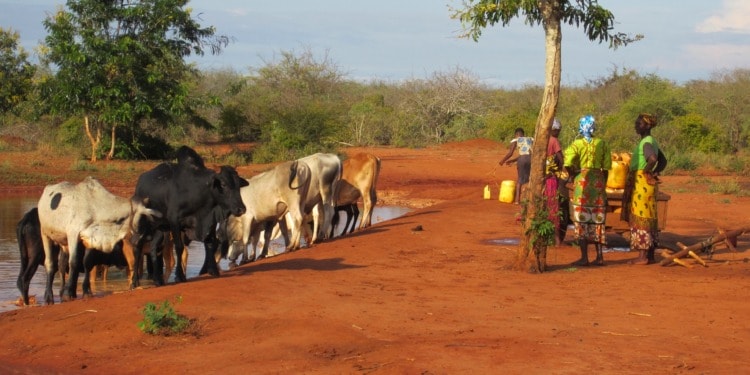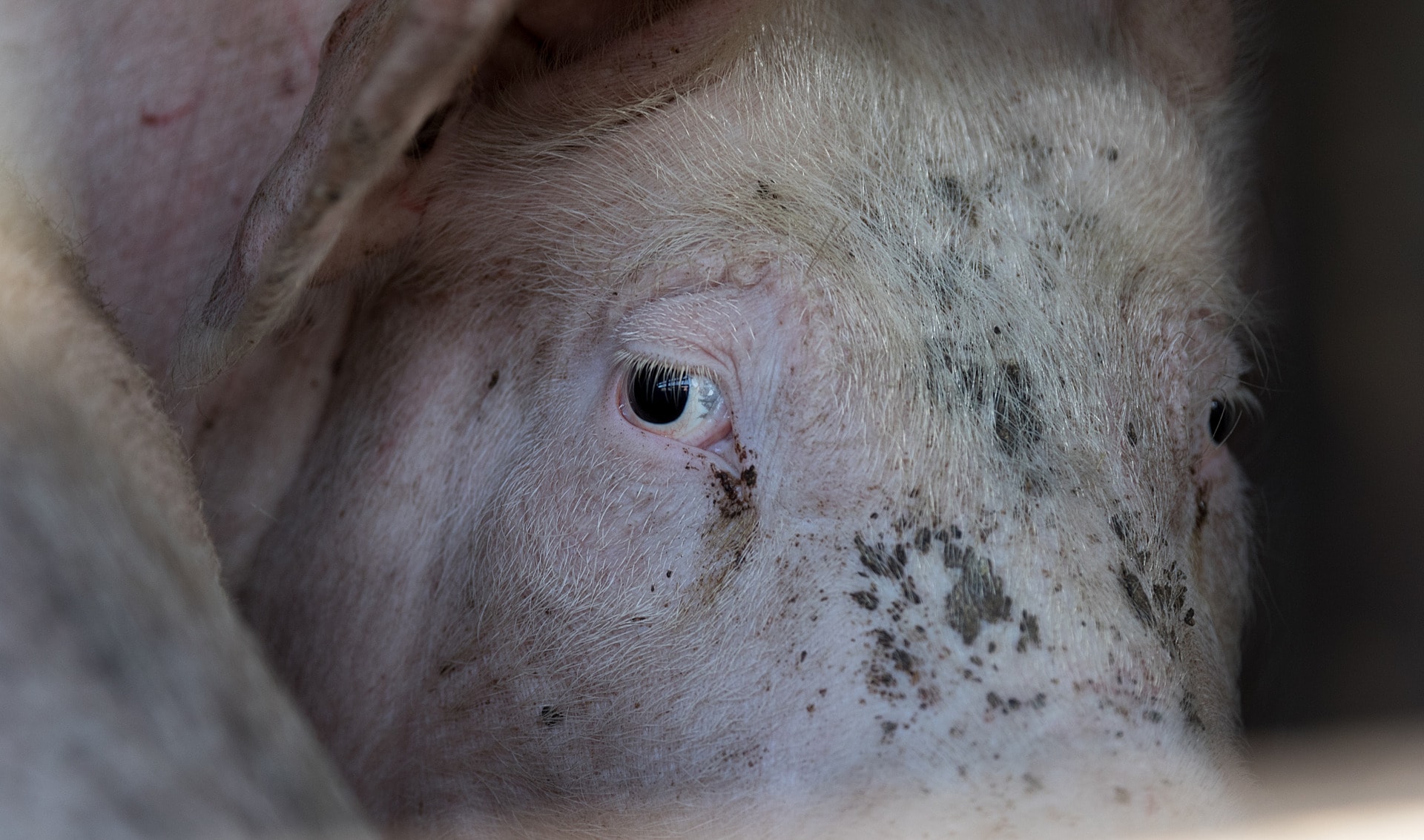The One Health community has valiantly made its case for many years, with some success to be sure. But it has never been given its proper due in terms of commitments, research, policies, or resources by politicians, international public non-profit, or for-profit institutions; and it continues to receive insufficient attention from the media.
Over the course of this year, there have been signs that the platelets may be falling in place for a banner year ahead. Here are some of the pieces signaling that such hope may be warranted. These include efforts by the One Health Commission, and the One Health Initiative, reaching students through the International Student One Health Alliance (ISOHA) and by international organizations.
By year-end, at the international level, considerable progress was made with the One Health Joint Plan of Action developed by the “Quadripartite” of the four organizations involved – World Health Organization (WHO), United Nations Environment Programme (UNEP), the Food and Agriculture Organization (FAO), and the World Organisation of Animal Health (WOAH). The Quadripartite is investigating the drivers of health risks that include climate change, land use change, and environmental degradation.
The 10 New Insights in Climate Science report released at COP27 highlights these connections and their downstream effects that are accelerated by climate change: it causes close to 40 percent of heat-related deaths and increased frequency of wildfires, affecting both physical and mental health in the short- and long-term. Outbreaks of infectious diseases are also expected to increase due to climate change.
At the COP15 meeting on biological diversity, a panel discussion led by WHO and the Pan American Health Office focused on the importance of interlinking biodiversity, climate and human health for stronger One Health systems. The Montreal Roadmap for Biodiversity, Climate and Health was drafted to address the post-2020 Global Biodiversity Framework. Some 190 countries agreed to protect 30 percent of the planet’s land and oceans by 2030 and to take numerous measures against biodiversity loss – here too, the One Health approach will be critical.
And all this has happened while we have been experiencing the Covid pandemic which has been a health “Black Swan”, resulting globally in human misery, morbidity, and mortality in the millions, economic losses, and bankruptcies – by some estimates, causing losses amounting to $30 trillion and counting.
As WHO Director-General Tedros Adhanom Ghebreyesus said:
“The COVID-19 pandemic has taught all of us many painful lessons. One of the most important is that we can only truly make the world safer with a One Health approach that addresses the intimate links between the health of humans, animals and our environment – and especially by addressing the existential threat of climate change.” (bolding added)
Whatever the origins of the pandemic (natural or man-made), experts widely agree it is not “if” but “when” we will need to address the next major infectious disease outbreak.
And since any future infectious disease is more likely than not to originate from animals and plants – according to the CDC, historical evidence shows this is the case for 3 out of 4 new or emerging infectious diseases -, and given prospects of airborne transmission and the fact that our world is increasingly globalized with people and animals ever more interconnected and climate change is accelerating, it is to be expected that animal, human, and environmental linkages will only become stronger and the likelihood of pandemics higher.
And that, of course, is what the approach commonly labeled One Health is meant to address. It places health issues in a continuum of humans, animals, and ecosystems. It has many facets and advantages too numerous to mention here.
We will just focus on highlighting some key points: Why prioritizing pandemic prevention and the One Health approach makes sense and how this requires a watershed change in the views held by not just scientific communities and specialized international institutions such as the World Bank or the Quadripartite but in the public at large.
The true cost of pandemic prevention: 100 times less than military spending
A short-form way to put the argument forward is to express it in economic terms: Investment of less than 1% of the amount spent in global military defense for One Health with an emphasis on prevention and surveillance, would be a financial advisor’s dream.
This point was most recently brought up in an interesting panel discussion held during the World Health Summit last October. Panelists included Prof. Dr. Andy Dobson (Princeton University), Dr. Catherine Machalaba (EcoHealth Alliance), Dr. María Neira (World Health Organization) and Secretary of State Jochen Flasbarth (German Federal Ministry for Economic Cooperation and Development).
The video is well worth taking the time to watch. It brings home a major truth: The cost of preventing the next pandemic is “equal to just 2 percent of the Covid economic damage” and that is a conservative estimate, based on assessing the total cost of Covid damage at $11.5 trillion (lost GDP plus mortality costs). That estimate was made two years ago, and now that Covid has continued and is causing huge economic losses in China, the damage from Covid is likely to be much greater. Therefore, the comparatives cost of prevention would be even much lower.
And unfortunately, we haven’t yet seen the end of the road. As we write, Covid cases are exploding in China. How this new surge will impact the global economy still has to play out, but it is certain to be dramatic. Potentially three waves of Covid could hit China this winter with conceivably 50 percent of the population affected and possibly up to two million deaths:
Military spending remains in everyone’s minds everywhere as the primary defense policy – the most important thing a government can do – and even in the world’s largest democracy, the United States, billions are spent on it.
The latest US defense bill amounts to $797.7 billion – and this corresponds to an 8 percent increase approved by Congress last week. Compared to the $69.3 billion budget increase, the “emergency” amount for Ukraine, $27.9 billion, doesn’t even seem excessive – indeed, after Zelensky’s speech to Congress on December 22, the Congress included an additional $45 billion for Ukraine military, economic and humanitarian assistance in the approved federal budget just before the holiday break.
And of course, the US is not the only democracy engaged in raising military expenditures, apparently caught in an unending spiral of spending, as Professor Jeffrey Sachs so convincingly argues in the above video. All across Europe, the war in Ukraine has prompted a significant reappraisal of defense and security and multiple NATO and national military budgets are on the rise, notably in Germany but also Poland, Austria, Sweden and a number of other countries.
However, the increases are not all caused by concerns over Ukraine. McKinsey reports that according to its modeling, even if Russia had not heightened security concerns by invading Ukraine, European defense spending would have risen from €296 billion in 2021 to €337 billion in 2026—an increase of 14 percent. And this suggests that we have all fallen into a habit of thinking that military spending always needs to rise, no matter what.
A habit we need to shake off. A sea change in policy thinking is required, one that will embrace a broader notion of national security that transcends military concerns and focuses on public health safety: It consists of protecting national health and avoiding catastrophic environmental threats to public health.
The road to One Health could be long. A recent study by an international group of experts rang the alarm bell. Titled Exchange and Coordination: Challenges of the One Health Movement, it was presented orally at the 7th World One Health Congress in Singapore. The experts concluded, after examining in detail the extent to which the One Health concept actually guided government and non-government institutions that have pledged to support One Health, that the “global One Health movement” was in fact still “fragmented and uncoordinated”. The authors made several proposals to strengthen action, including sharing information with the general public and seeking synergies to “efficiently promote and support bottom-up efforts.”
Looking forward: The light at the end of the tunnel
There are however signs of hope, and glimmers of new thinking in international platforms that have turned greater klieg lights on One Health.
The G7, G20, the Berlin World Health Summit panels, and Singapore 7th World One Health Congress are the tip of the public conclaves. For example, regarding the Congress in Singapore, it was extraordinarily rich in events:
The 7th World One Health Congress has been an event full of successes, with 2383 participants coming together to have insightful and important discussions into the intricacies of One Health. We’re looking forward to bringing this success and lessons learnt over to the next WOHC. pic.twitter.com/JwRNZogTBC
— World One Health Congress (@WOHCongress) December 9, 2022
And it is part of a long series of meetings, poised to continue in the future:
We’re thrilled to announce the location of the 8th World One Health Congress in 2024.
See you in Cape Town, South Africa!#WOHC2024 @GlobalOHC pic.twitter.com/Bem8aur4Kv
— World One Health Congress (@WOHCongress) November 11, 2022
Most encouragingly, and as mentioned above, the Quadripartite’s One Health Joint Plan of Action became a point of reference and a guiding light during the most recent G20 meeting. The Quadripartite supported the Indonesian G20 Presidency by developing the Lombok G20 One Health Policy Brief. Through consultations with governments and with input from the One Health High-Level Expert Panel, specific recommendations for countries were identified to help them scale up and integrate the One Health approach in their policies, including for more effective research and investment.
The World Bank and WHO created a new Pandemic Fund which leastways has “prevention” in its original title and prospects are good that as it gets more funding, more attention will go to prevention.
Furthermore, regions have begun considering or establishing policies and new entities to take One Health to the next level.
Probably the most advanced is Europe with its One Health European Joint Programme (OneHealthEJP), firmly based on the One Health concept. With a substantial programme of dedicated Joint Research Projects in line with the “Prevent-Detect-Respond” concept, the One Health EJP manages a budget of €90 million (50% co-funded) to carry out research activities in the following three areas:
- The Joint Integrative Project and education and training in the fields of Foodborne Zoonoses (FBZ),
- Antimicrobial Resistance (AMR) and
- Emerging Threats (ET).
A total of 44 food, veterinary and medical laboratories and institutes across 22 member states in Europe are involved, including the Med-Vet-Net-Association. Most of the 44 institutes have reference responsibilities, representing a sustainable framework for a vibrant integrated research community, supported by a series of regular meetings and a monthly newsletter.
And, as expected, One Health EJP works closely with the Quadripartite:
The #OneHealth Joint Plan of Action provides an essential framework for #disease #preparedness.
Thanks to Quadripartite @WOAH @FAO @UNEP @WHO https://t.co/agomLRNoyn— One Health EJP (@OneHealthEJP) December 21, 2022
In North America, there are also signs of new commitment and awakening. Canada ably hosted COP 15 and made new financial commitments in support of nature and biodiversity in developing nations, recognizing the rights and role of Indigenous peoples, something Canada strongly advocates for.
The United States has been increasing research spending on One Health but does not provide a consolidated amount. That said, the U.S. Department of Agriculture, its Fish and Wildlife Service, the U.S. Food and Drug Administration (FDA), the Centers for Disease Control and Prevention (CDC), the huge National Institutes of Health (NIH), the Environmental Protection Agency, along with the Department of Defense, allocate significant research funds to maintain or reduce health risks to animals, humans, the environment and society.
A provision directing the development of a One Health Framework across the federal government was included in the final 2022 spending bill of the year. The legislation passed derives from the AVMA-championed Advancing Emergency Preparedness Through One Health Act. Congress now directs federal agencies to develop and submit a national One Health Framework to collaboratively address zoonotic diseases and advance public health preparedness.
Furthermore, another Congressional legislative effort is in the wings, with Senator Gillibrand’s intention to introduce a new “groundbreaking” One Health Security Act (a bill to “prevent, detect and respond to biological threats”) next month.
In some respects, developing country regions have been more proactive.
The Africa Centers for Disease Control and Prevention has established a One Health Coordination Group on Zoonotic Diseases. In the Middle East voices are now heard making the case that One Health should be the next of global health for this region.
And there are some efforts to make the subject more accessible and digestible to the global public, such as the Netflix documentary “Breaking Boundaries”, a film narrated by Sir David Attenborough that follows the scientific journey of Professor Johan Rockström, which led to the discovery planetary thresholds we must not exceed — aka Planetary Boundaries:
As Jonathan Clay, the film director reminds us in this tweet, there is no time to lose:
Breaking Boundaries out now on @Netflix. Listen to the science, watch the film with others, and make a plan for collective action. This is the decisive decade. pic.twitter.com/p5aDK8eIO9
— Jonathan Clay (@JonathanClay) June 5, 2021
And just a few days ago, there has been popular media attention to a potential threat from mosquito mutations resisting insecticides and as vectors for transmission.
But overall, the public writ large has not been guided to the longer-term’s consequences of mishandling the human, animal, and environmental nexus.
So, there are only muted voices heard by leaders to find the resources for such a One Health approach. And a significant reason this is the case is that major media establishments have not been ready to give print, air, or electronic time to this subject.
Indeed, there are no large regular programming, reporting high profile reporters, or talk shows that have taken this up as a holistic priority for their audiences. Media and industry often talk of social responsibility. This is one subject “missing in action” in the public space which would be of immense value to us all: Time for media moguls, companies, and the concerned wealthy to take it on and out to the public.
Editor’s Note: The opinions expressed here by the authors are their own, not those of Impakter.com — In the Featured Photo: WHO One Health – featuring environmental conservation in Kenya Source: WHO One Health page Credit: ILRI Juliet Kariuki













